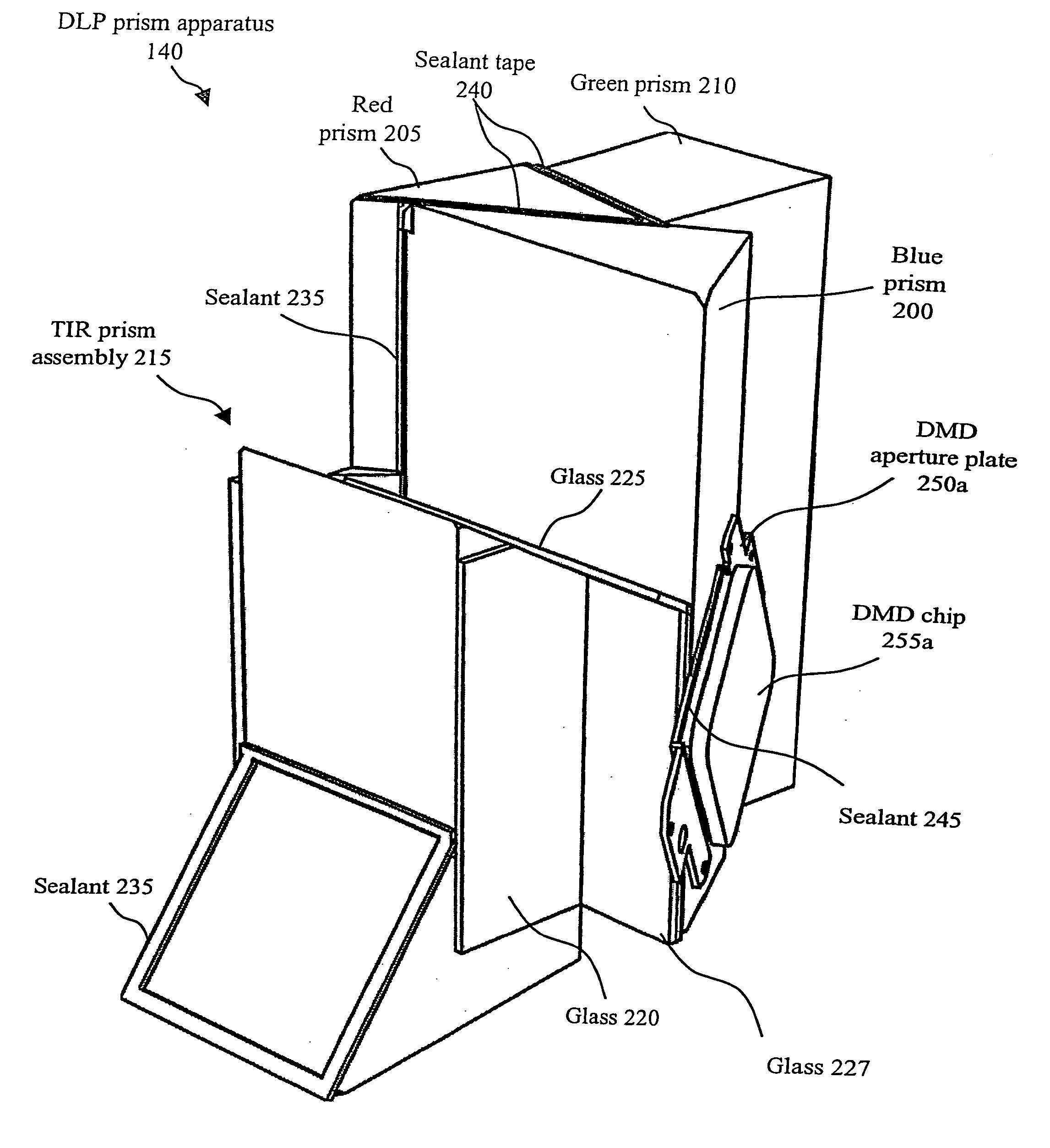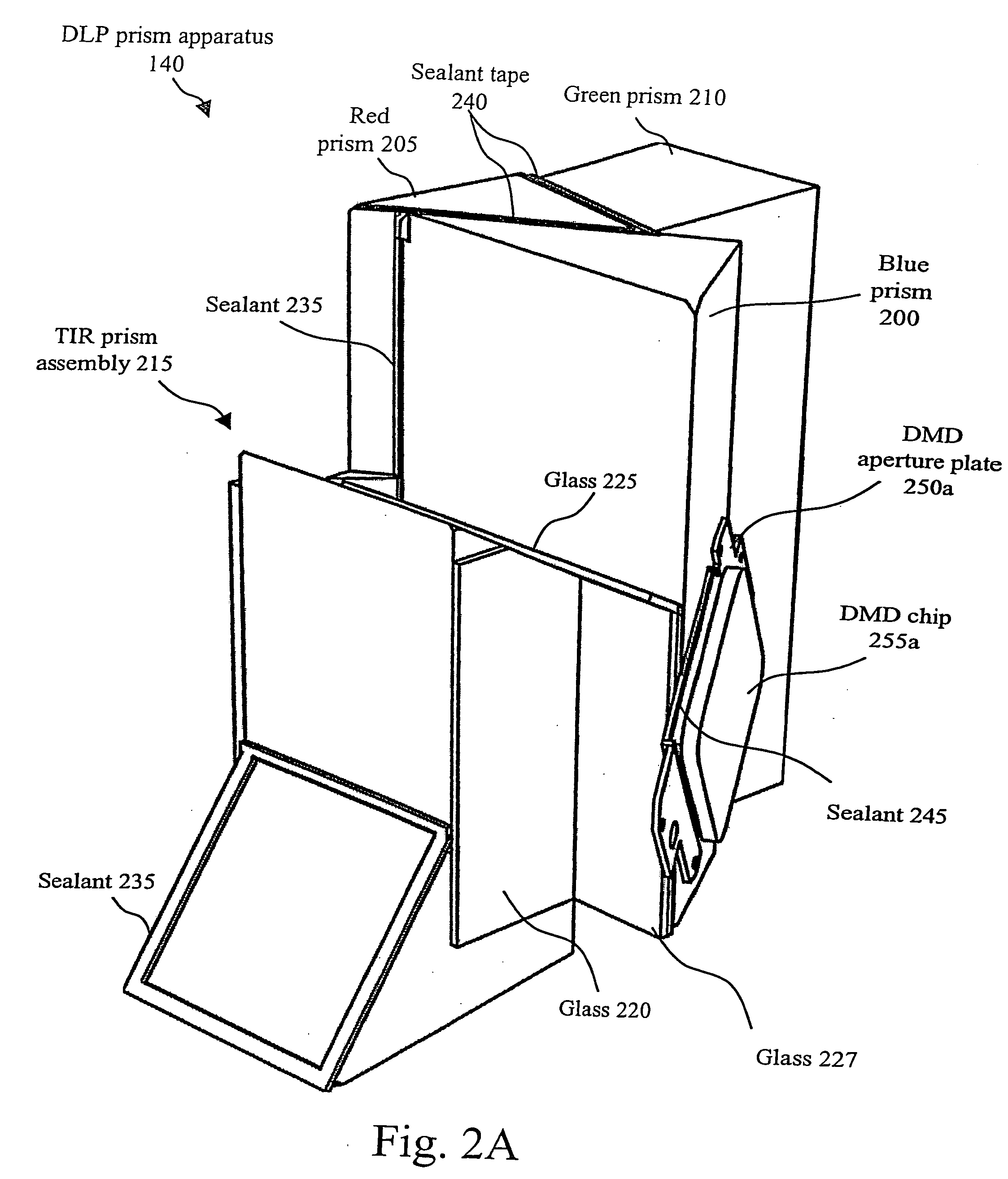Prism assembly
a technology of prism and assembly, which is applied in the field of prism assembly, can solve the problems of large supplantation, high susceptibility to frequent breakdown, and difficult calibration
- Summary
- Abstract
- Description
- Claims
- Application Information
AI Technical Summary
Benefits of technology
Problems solved by technology
Method used
Image
Examples
Embodiment Construction
[0024] The present invention relates to sealing from atmospheric contaminants the air gaps, specifically, the air gaps between prisms and the air gaps between the prisms and the digital micro-mirror devices (DMD), in a digital light processing (DLP) engine.
[0025]FIG. 1 illustrates a functional block diagram of a generic DLP light engine system 100. Generic DLP light engine system 100 includes a lamp 110, an integration rod 120, an optic relay system 130, a DLP prism apparatus 140, and a projection lens 150. Lamp 110 is a standard lamp that is used in digital projection systems, for example a mercury or xenon bulb lamp. Lamp 110 shines onto integration rod 120, which conditions and manages the light for even distribution. Optic relay system 130, a set of 4-6 lenses, transmits the light from integration rod 120 towards DLP prism apparatus 140. DLP prism apparatus 140 is formed of blue, red, and green prisms, DMD chips, and DMD aperture plates and is further described in reference to ...
PUM
 Login to View More
Login to View More Abstract
Description
Claims
Application Information
 Login to View More
Login to View More - R&D
- Intellectual Property
- Life Sciences
- Materials
- Tech Scout
- Unparalleled Data Quality
- Higher Quality Content
- 60% Fewer Hallucinations
Browse by: Latest US Patents, China's latest patents, Technical Efficacy Thesaurus, Application Domain, Technology Topic, Popular Technical Reports.
© 2025 PatSnap. All rights reserved.Legal|Privacy policy|Modern Slavery Act Transparency Statement|Sitemap|About US| Contact US: help@patsnap.com



